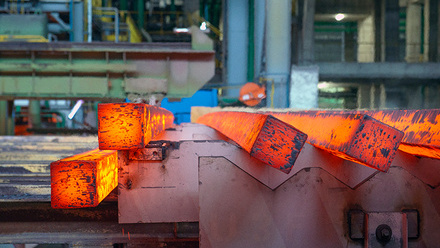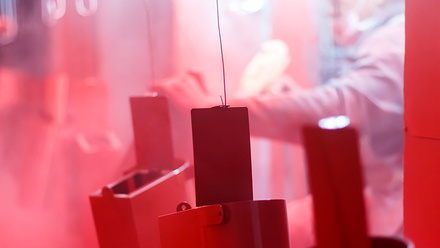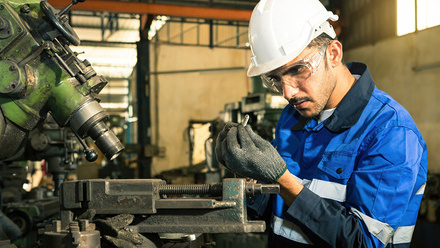Material Marvels: Capping it off - the evolution of the bottle top
The screw cap bottle top has been a packaging staple for decades, but the need for functionality and sustainability has prompted a flurry of innovative designs and material choices. Ceri Jones looks the development of modern closures.
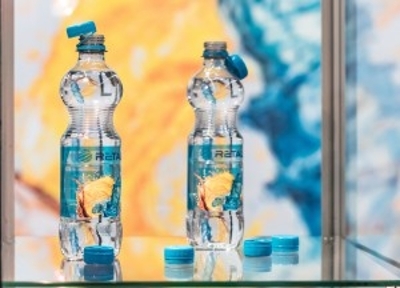
Many may not have realised it, but there has been a revolution going on right under our noses – at our lips, to be precise. Over the past few years, bottle closure designs have been overhauled, leaving us with a cornucopia of caps breaking the mould across both form and function.
For years, the trusty bottle top had very few variations, the most recognisable being the metal crown, the flip top, and the eponymous screw cap. This latter is the most common and versatile, being used for products as diverse as soft drinks, ketchup, detergents and toothpaste. But in recent years the simple screw cap hit a period of inspiration that spurred an era of seemingly endless packaging innovations to differentiate brands and make each closure bespoke to its purpose.
Make it an original
One classic example is ketchup. The switch from an internal thread screw cap to a sophisticated valve system, with its hard snap lid, spout and the all-important silicon barrier, meant no more mess or loss of lid, as well as the ability to shift from glass to softer plastic bottles or even flexible packaging. Since this, the squeezable valve closure has been embraced by all manner of lines, from other condiments and jellies, to beauty products, sun protection and sanitisers.
Other inspired closures include the dosage dispenser. While at first it may appear to be a novelty item to attract consumers, the dosage cap is gaining popularity due to the product benefits it offers. The closure has several elements – the base screws on the thread as normal, then there is a compartment sealed by a pull tab, usually containing a powder ingredient, all covered by a plastic lid. The designs differ by manufacturer, but in general the tab is removed and the top of the lid pushed down to release the powder into the bottle, to be shaken before consumption.
Early examples of this design were seen across products aimed at children and young people to encourage them to create their own drinks with different flavours and colours, but it is gaining traction in the health and wellbeing sectors. The cap helps to control an exact amount of product to be dispensed, cleanly and safely, but also preserves ingredients that are not shelf-stable or that contain an active ingredient, such as vitamins, protein, or electrolyte powders.
It is also effective for aesthetic, as with a matcha green tea drink that tends to discolour over time but looks fresh and appealing when newly mixed. These caps have since been modified to accommodate liquid and granule dosing chambers, as well as detachable ones for home refilling. Health and nutraceuticals are pushing this trend forward, with larger chambers to accommodate high doses of protein powder, supplements, and even measuring scoops.
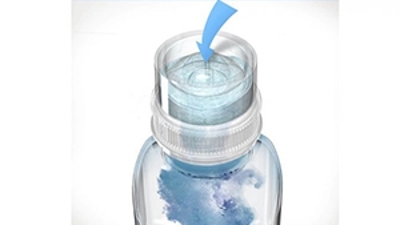
Over the past few decades, we have seen the rise of long and short spouts, pourers and even flower petal-shaped caps for easy turning with minimal strength. But one area showing a surprisingly significant level of design development is the sports cap. Think back to the early 1990s when the majority of bottles for on-the-go drinking were a push-pull format that inevitably ended up with teeth marks from gripping the end to drag it open. This was a step forward, but the closure was liable to leak, undergo damage, and even come apart and present a choking hazard. This was only partially resolved when some manufacturers added spout and flip top variations to provide better hygiene, but without solving the leaking.
Since then, the sport cap sector has sprinted ahead in terms of progress, largely due to the combining of individual advances. Some of the most popular drinks brands use several elements to meet consumer needs, such as a screw cap with a hinged snap or flip top protective cover, a soft spout, and a valve system to prevent leaks – there are even some with button-activated opening action.
This last was pioneered by Lucozade Ribena Suntory as a way to stand out, but also to increase suitability to the targeted consumer. This drink was popular with young children who would need to be able to open a tricky cap on their own, or be helped by busy parents or grandparents, who would also need a safe and hygienic cap that could not be lost, swallowed, leak or hard to open.
Sticking together
While attracting attention and differentiating are key drivers for change, so is legislation. On 27 March 2019, the European Parliament agreed the Single-Use Plastic (SUP) regulation which called for single-use plastics to be phased out by 2021. It also placed restrictions on plastic bottles, including that by 2025, all plastic bottles should be made from 25% recycled materials, and by 2029, 90% should be recycled. The AB 319 California legislation makes similar regulation guidelines for the USA market.
These laws are intended to reduce land and marine pollution by increasing the quantity of plastic bottles being collected and recycled. In conjunction with mandatory targets are optional ones, including the Association of Plastic Recyclers’ Caps On campaign, which informs of the importance of placing tops back on certain containers when recycling them. ‘Bottles with caps on provide a proven domestic market, motivated by consumer brand company demand for polypropylene post-consumer resin, which is the resin type of the majority of caps and closures,’ the organisation stated on its website.
However, while there is urgency to devise options that work for both consumers and manufacturers, regardless of ethics, people will still need and want bottled water and so will require single-use packaging options. Together, legislation and awareness campaigns are increasing the pressure on manufacturers and brand owners to comply with the regulations, producing packaging that is user-friendly, safe and convenient, but also responsible, making it easier for consumers to manage the end-of-life correctly.
A recent small packaging innovation with the potential to make a big difference was the introduction of tethered closures. Tethers keep the caps attached to the bottle after opening, for user convenience but primarily to improve the overall eco-friendliness of the packaging.
By keeping the cap, the manufacturer can increase the likelihood of it being carried through the reclaim and recycling journey with the rest of the container. This would prevent bottle caps from polluting the wrong refuse streams, going to landfill or ending up in the oceans.
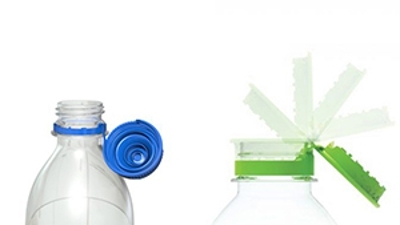
It also means retaining valuable resources in the materials cycle that would potentially go to waste. This is just one example of manufacturers and retailers taking greater responsibility for end-of-life waste management, and making it easier for consumers and recycling facilities to treat the materials properly.
One packaging producer, Cyprus-based Retal, investigated several designs for its new tethered closure for which it gained a patent in June 2019. It had to ensure a smooth opening and for the cap to drop back so the piece and the band’s teeth would not present a problem when drinking – all would be essential to ensure market acceptance. The company chose an injection moulding method for the high density polyethylene (HDPE) piece, and a band tightly fitted to the bottle neck to minimise cap movement.
Retal Sustainability Director, Emmanuel Duffault, said the tether is part of the company’s progressive corporate social responsibility goals for design-to-recycle and use of recycled material. ‘We have employees worldwide and we are all conscious of and worried about the negative environmental impact of our products,’ he said. ‘Tethered closures are part of our effort towards a circular economy as they mean that the HDPE closure is not separated from the plastic bottle and so is less likely to cause additional plastic pollution.’
USA-based Aptar Food + Beverage has also launched tethered caps, in two different formats. First is a version similar to the Retal product, presenting a screw cap that hangs from a drop band, under the name Stay-With, and second is an award-winning hinged design. In partnership with Japanese firm Nippon Closures Co, Aptar licensed Nippon’s StrapBand tethers to add to its flat and sport caps.
While Retal’s unique selling point is a firm tether band that will not spin and hit the drinker, Aptar’s aim was to minimise interference with a tether hinge firm enough to withstand use and not come free. It was also made specifically for very short-necked bottles and preforms. As short-necked bottles were sure to be a problem area for packaging designers, the company targeted this as a way to stand out. Aptar decided to use a flat cap and not a screw cap to resolve the inhibiting factor of neck length. This solution, called Flip Lid, is fully opened away from the neck and increases sustainability as it has no thread, is shorter so requires less material, which reduces subsequent production. The flat cap flip top is new to the beverages sector and more familiar in edible oils and home care products, so required new testing and characterisation processes.
Materials difference
Sustainable and environmentally friendly packaging often brings up the question of material choices. Closure manufacturers offer their caps in an ever-growing range of polymers, from HDPE, polypropylene, polyethylene terephthalate (PET), rPET, and more recently bio-based materials. For instance, some manufacturers are promoting their use of bioplastics such as bioethanol – polyethylene derived from plants, usually sugarcane, which has a higher level of sequestered carbon than that derived from fossil fuels.
However, there is a benefit of keeping it simple. Through smart but minor design changes, like the use of tethered closures, raw materials, supply chains and production are kept the same, and consumers are not expected to modify their behaviour or check labels and deal with their waste differently. Therefore, all packaging can be used, sorted and recycled in a way that is familiar and widely possible, increasing the chance of more bottle tops being recycled.



